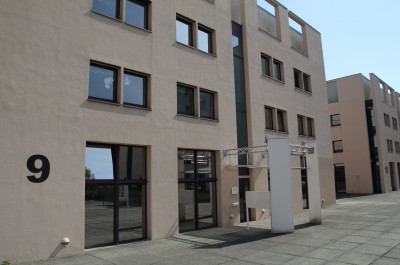| Project period |
15.11.2022 – 15.11.2024
| Prroject staff |
Prof. Dr. Tillmann Bartsch (project manager)
| Cooperations |
Prof. Dr. Bernd-Dieter Meier (Lehrstuhl für Strafrecht, Strafprozessrecht und Kriminologie an der Leibniz-Universität Hannover)
| Funding |
.png)
| Project description |
 Since 1969, the German Criminal Code (StGB) has stipulated that the motives and aims of the perpetrator must be taken into account when sentencing (cf. today sec. 46 subs. 2 s. 2 StGB). The law applied unchanged for a long time until the motives and aims were supplemented by the clause “especially also racist, xenophobic or other inhuman” aims against the background of the acts of the “National Socialist Underground” in 2015. Six years later, this clause was expanded to include “anti-Semitic” targets.
Since 1969, the German Criminal Code (StGB) has stipulated that the motives and aims of the perpetrator must be taken into account when sentencing (cf. today sec. 46 subs. 2 s. 2 StGB). The law applied unchanged for a long time until the motives and aims were supplemented by the clause “especially also racist, xenophobic or other inhuman” aims against the background of the acts of the “National Socialist Underground” in 2015. Six years later, this clause was expanded to include “anti-Semitic” targets.
With the 2015 and 2021 amendments to the law, the legislature associated the expectation that by emphasizing the “racist, xenophobic, anti-Semitic (and) other inhuman” motives and goals, it would induce practitioners to prosecute such offenses more vigorously. Whether this goal has been achieved is not yet known.
In a two-year study, which Criminological Research Institute of Lower Saxony (KFN) is conducting together with Prof. Dr. Bernd-Dieter Meier (Chair of Criminal Law, Criminal Procedure Law and Criminology at Leibniz University Hannover) on behalf of the German Federal Ministry of Justice, the effect of said amendments to sec. 46 subs. 2 s. 2 StGB: Specifically, this interdisciplinary study examines how police and judicial practice handles these changes, what difficulties and weaknesses are revealed in their application, and what consequences result from this for the handling of sec. 46 subs. 2 s. 2 StGB. This is done by means of a file analysis of cases from the field of hate crime consisting of quantitative and qualitative elements as well as qualitative interviews conducted with injured persons and experts from the fields of victim protection, police, public prosecutor’s office, court and criminal defence.

